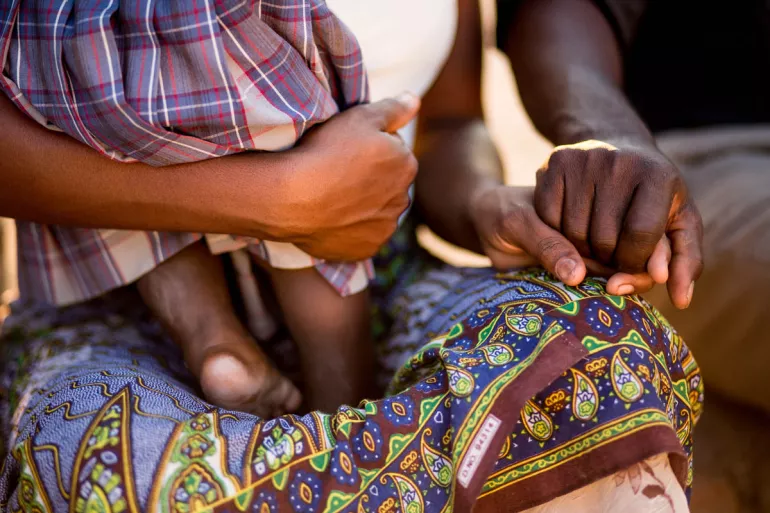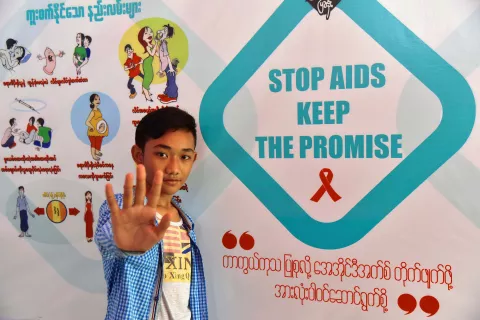1.1 million HIV infections in children averted - UNICEF

- Available in:
- 中文
- English
NEW YORK, 28 November 2014 – An estimated 1.1 million HIV infections among children under 15 have been averted, as new cases declined by over 50 per cent between 2005 and 2013, according to data released by UNICEF today ahead of World AIDS Day.
This extraordinary progress is the result of expanding the access of millions of pregnant women living with HIV to services for the prevention of mother to child transmission (PMTCT). These include lifelong HIV treatment that markedly reduces the transmission of the virus to babies and keeps their mothers alive and well.
“If we can avert 1.1 million new HIV infections in children, we can protect every child from HIV – but only if we reach every child,” said UNICEF Executive Director Anthony Lake. “We must close the gap, and invest more in reaching every mother, every newborn, every child and every adolescent with HIV prevention and treatment programmes that can save and improve their lives.”
The sharpest declines took place between 2009 and 2013 in eight African countries: Malawi (67%); Ethiopia (57%); Zimbabwe (57%); Botswana (57%); Namibia (57%); Mozambique (57%); South Africa (52%) and Ghana (50%).
But the global goal of reducing new HIV infections in children by 90 per cent between 2009 and 2015 is still out of reach. Only 67 per cent of pregnant women living with HIV in all low- and middle-income countries received the most effective antiretroviral medicines for PMTCT in 2013.
Disparity in access to treatment is hampering progress. Among people living with HIV in low- and middle-income countries, adults are much more likely than children to get antiretroviral therapy (ART). In 2013, 37 per cent of adults aged 15 and older received treatment, compared with only 23 per cent of children (aged 0-14) – or less than 1 in 4.
AIDS mortality trends for adolescents are also of significant concern. While all other age groups have experienced a decline of nearly 40 per cent in AIDS-related deaths between 2005 and 2013, adolescents (aged 10-19) are the only age group in which AIDS-related deaths are not decreasing.
UNICEF's Statistical Update on Children, Adolescents and AIDS provides the most recent analysis of global data on children and adolescents from birth to 19 years of age.
To download a copy of the data update, excel spreadsheets, tables and graphs, please visit: www.childrenandaids.org
Media contacts
About UNICEF
UNICEF works in some of the world's toughest places, to reach the world's most disadvantaged children. Across 190 countries and territories, we work for every child, everywhere, to build a better world for everyone. For more information about UNICEF and its work for children visit www.unicef.org.
| Visit UNICEF China website: www.unicef.cn Follow us on Sina Weibo: http://weibo.com/unicefchina Tencent Weibo: http://t.qq.com/unicef Wechat: unicefchina |



